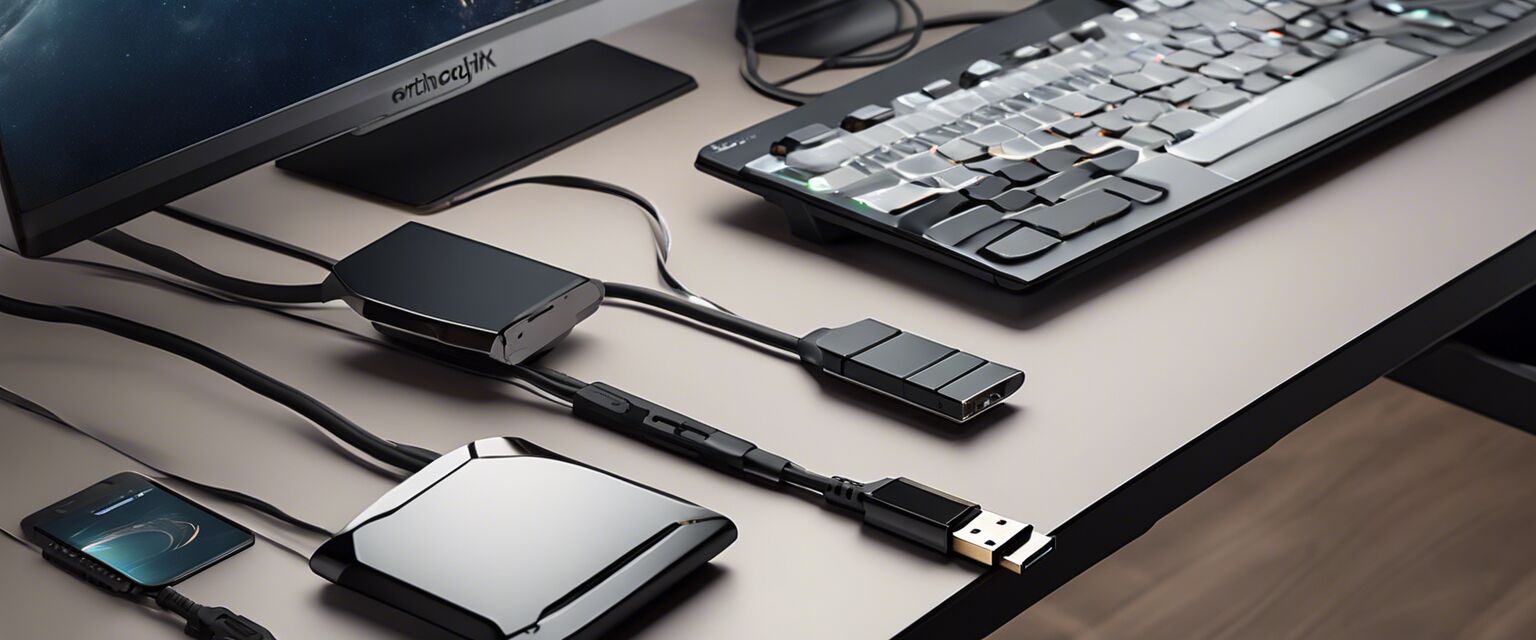
Multi-Port USB Hubs
Key Takeaways
- Multi-port USB hubs enhance connectivity by allowing multiple devices to connect simultaneously.
- They come in various designs, including powered and unpowered options.
- Consider factors like speed, number of ports, and compatibility when choosing a hub.
- Ideal for both home and office setups, especially for tech enthusiasts.
In today's tech-savvy world, having multiple devices connected to your computer can be a challenge. This is where multi-port USB hubs come into play. These handy gadgets allow you to expand your connectivity options, making it easier to manage all your peripherals. In this article, weâll dive deep into the world of multi-port USB hubs, discuss their various features, and help you determine which one is right for your office setup.
What is a multi-port USB hub?
A multi-port USB hub is a device that provides additional USB ports, allowing users to connect multiple USB devices to a single USB port on a computer or laptop. This is particularly useful in office setups where several peripherals are in use, such as keyboards, mice, printers, and external hard drives.
Types of multi-port USB hubs
There are primarily two types of multi-port USB hubs: powered and unpowered.
| Type | Description | Pros | Cons |
|---|---|---|---|
| Powered | These hubs come with an external power source, allowing them to provide power to connected devices. |
|
|
| Unpowered | These hubs draw power directly from the computer, limiting their capacity to power devices. |
|
|
Choosing the right multi-port USB hub
When selecting a multi-port USB hub, consider the following factors:
- Number of Ports: Determine how many devices you need to connect.
- Data Transfer Speed: Look for USB 3.0 or higher for faster transfer rates.
- Power Supply: Decide if a powered hub is necessary based on your devices.
- Design and Size: Consider the space available on your desk and the hub's portability.
Connection Speed Comparison
| USB Version | Transfer Speed |
|---|---|
| USB 2.0 | Up to 480 Mbps |
| USB 3.0 | Up to 5 Gbps |
| USB 3.1 | Up to 10 Gbps |
| USB 3.2 | Up to 20 Gbps |
Benefits of using multi-port USB hubs
Utilizing a multi-port USB hub can significantly enhance your work efficiency. Below are some benefits:
- Increased connectivity for various devices.
- Organized workspace with fewer cables cluttering your desk.
- Improved productivity by reducing the hassle of plugging and unplugging devices.
- Flexibility to connect and disconnect devices as needed.
Setting up your multi-port USB hub
Setting up a multi-port USB hub is typically straightforward. Hereâs a simple guide:
- Choose a suitable location for your hub.
- Connect the hub to your computer using the provided USB cable.
- If powered, plug the hub into an electrical outlet.
- Connect your devices to the hubâs USB ports.
- Ensure that your devices are recognized by your computer.

Common issues with multi-port USB hubs
While multi-port USB hubs are generally reliable, you may encounter some common issues:
- Device Not Recognized: Ensure the hub is properly connected and powered.
- Insufficient Power: If using an unpowered hub, consider switching to a powered version for high-demand devices.
- Slow Transfer Speeds: Check if you are using USB 2.0 devices on a USB 3.0 hub.
Conclusion
Multi-port USB hubs are invaluable tools for anyone working with multiple devices. They enhance connectivity, improve workspace organization, and boost productivity. By understanding the different types, features, and setup processes, you can select the perfect hub for your needs. Explore our other articles on ergonomic keyboards and mice, noise-cancelling headphones, and smart desk lamps to enhance your office setup further.
Pros
- Increased number of USB ports
- Improved organization and flexibility
- Enhanced productivity
Cons
- Can be bulky for some setups
- Powered versions require additional outlets
- Compatibility issues with some devices

Tips for beginners
Getting started with multi-port USB hubs
- Start with a basic hub to understand your connectivity needs.
- Check compatibility with your existing devices.
- Experiment with powered and unpowered options to see which works best for you.









